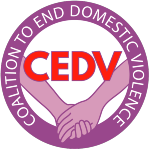Domestic violence programs often shortchange or even exclude the persons they purport to be helping:
- Failure to address the root causes of domestic violence (e.g., alcohol abuse, mental health issues, marital conflict, etc.), which allows the cycle of violence to continue.
- The Centers for Disease Control has identified a broad range of risk factors:
- Individual
- Relationship
- Community
- Societal
- The Centers for Disease Control has identified a broad range of risk factors:
- Expanding definitions of domestic violence that dilute available resources for the neediest victims of the most serious offenses, and diminish the credibility of legitimate anti-violence efforts.
- Rampant waste and fraud, resulting in the dissipation of scarce resources and curtailment of services for victims.
- Press release: Violence Against Women Act: 7 Out of 10 Grant Recipients Flunk Audits
- Sarah Torre, “As recent investigations by the Department of Justice (DOJ) have revealed, disturbing instances of fraud and embezzlement of some Office on Violence Against Women grants have marred the original law’s intentions.”
- Counseling programs such as the Duluth Model do not utilize recognized mental health treatment methods and promote a gender ideology.
- Domestic violence pioneer Erin Pizzey comments, “The most sinister part of the Duluth Model is the use of brain washing techniques…Here men have to be re-educated to abandon their masculinity because it brings with it the evils of being born with a ‘Y’ chromosome that leads to rape, violence, and destruction.”
- Widespread exclusion of male victims.
- The study, Has Society Created Social Injustice for Male Victims of Domestic Violence? reveals, “These results demonstrate that men continue to encounter barriers when seeking services or help as a victim of domestic violence, despite evidence that they, too, are victimized in this way. It also demonstrated the lack of resources available to male victims in comparison to the resources available to female victims of domestic violence.”
- Ignoring victims’ wishes to not arrest the offender — victims often want the offender to get help, not be incarcerated. As a result, many victims have stopped calling for help.
- According to the Ms. Foundation for Women, “Unfortunately, when state power intervenes, it often takes over. Many people who call for assistance end up having no say in the intervention once the legal system has entered their lives.”
- Neglect of the widespread problem of mutual abuse, which means one of the abusers is denied treatment or help.
- An NIJ-funded study of teen violence reported the following rates of mutual abuse:
- Physical violence: 15.8%
- Psychological abuse: 23.1%
- Cyber dating violence: 8.6%
- An NIJ-funded study of teen violence reported the following rates of mutual abuse:
Reports:


